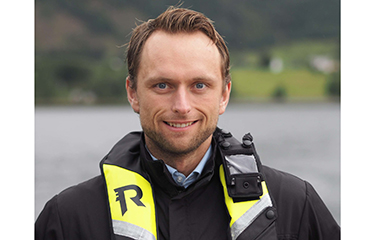November 2022 marked an important milestone for Norwegian cod farmer Gadus Group, with the launch of its first commercial deliveries to market.
“We have been working for almost three years to prepare for this point, nurturing the fish from eggs to harvest, so it is good for us to finally see our product on commercial sale,” Gadus Group Founder and CEO Ola Kvalheim told SeafoodSource. “We had done a few small trial harvests before, but can now build up weekly sales volumes step by step. By 2025, we aim to sell more than 30,000 metric tons per year, with year-round supply as a key benefit to the customer."
Within the past few years, a number of start-ups in Europe began to development commercial-scale cod aquaculture operations, rebooting the sector a decade after the first attempts to do so failed. The Gadus Group was unique compared to those other attempts, Kvalheim said, in that it made an early decision to be fully integrated – with its own hatchery, juvenile facility, and sea farms.
Part of the company’s drive to create a fully-integrated facility, Kvalheim said, stems from his own background. He grew up in a family involved in processing and selling wild-caught cod, and from that, he grew aware of the importance of maintaining full control of quality and traceability at every step of the supply chain, especially as part of Kvalheim's ambition that Gadus' fish be recognized as a premium product.
The results from constant biological monitoring show, thus far, the fish being grown by Gadus have had a 96 percent survival rate in the farms over 18 months, a feed-conversion ratio below 1.0 through the production cycle, and no early maturation.
“I believe that we can always strive to do better, but we have a firm focus on fish welfare and aim to grow the cod in ideal conditions. The proof of this is their fast growth rate, high quality, and average harvest weight above 4.8 kilograms,” Kvalheim said. “We have gone from a standing start to become the world’s largest cod farmer in under three years, with more than 80 employees, seven farms, and plans to install more in the future.”
The company recently signed a three-year agreement with aquafeed producer Skretting for cod feed. But the pact goes beyond a commercial partnership - the two companies plan to work closely together to better document the fish to understand the nutritional requirements of cod at every stage of the lifecycle, Kvalheim said.
“This is an exciting R&D and innovation agreement, which will lead to the production of improved, more-tailored feed for our fish,” Kvalheim said.
The cod are fed specially-designed pellets that ensure they do not seek out other food sources. As a result, the fish are nematode-free – a fact being documented in an ongoing research project in which all fish in Gadus' sea sites are sampled throughout the year.
“Confidence in our product is an important point for our customers and for consumers. The absence of nematodes, together with full traceability and the quality of our farmed cod, will open up the raw fish segment for the cod category, which is a fantastic opportunity to increase market penetration," Kvalheim said. "We aim to market our fish as a sushi [and] sashimi product in the near future."
Gadus Group currently works with an external harvesting and processing partner to allow it to cope with the remote locations of its farms, but is building its own facility near Ålesund, Norway, with the aim of bringing processing in-house in the near future.
Gadus' sales are currently focused on Europe, but the company is also working to source markets further afield, with potential customers in North America and Asia recently receiving samples. Feedback from the market has been positive, Kvalheim said, with purchasers commenting on the glossy skin and the color and firmness of the meat.
“So far, we have good penetration with retailers in the U.K., Spain, Portugal, and Benelux, and the HORECA market in the U.K., Spain, and France. Our model is based on growing with our existing customers, while also seeking new long-term partners to help us build a new category for farmed cod that can be supplied 52 weeks of the year,” Kvalheim said.
Kvalheim said he is confident that this approach will grow the overall whitefish category and solve some of the current pain-points in the industry, such as unpredictable and weather-dependent supply. He also said he believes wild cod sales will benefit from lifting the overall market, in the same way that wild Alaskan salmon gained in popularity once consumers had access to large volumes of farmed salmon.
At present, the cost structure of getting a Gadus-grown cod fillet or loin onto the plate is similar to that of high-quality fresh wild cod or farmed salmon fillets, and Kvalheim said he does not see an issue with pricing.
“Every day we try to develop the company. We have grown so much in just a short time, but it is a tough journey with many challenges,” he said. “However, it is also an exciting journey and, having gained proof of concept for the company’s farming methods and value-chain approach, I am confident of future success for cod farming.”
Photo courtesy of the Gadus Group







